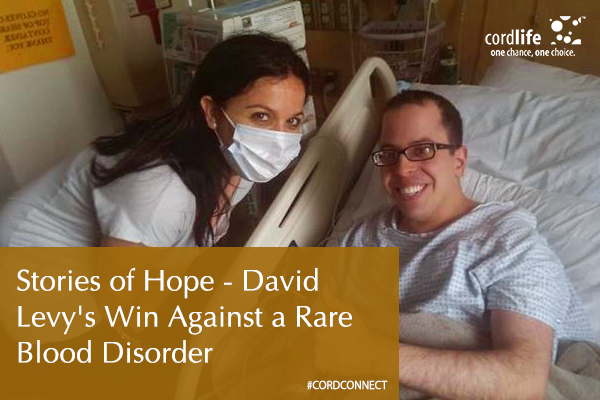Table of Contents
Doctors of the University of Illinois Hospital & Health Sciences System have successfully conducted a stem cell transplant to cure a rare blood disorder, named congenital dyserythropoietic anemia (CDA). It’ a rare condition, in which the body does not create enough red blood cells, which leads to organ damage and even early death.
This is the story of David Levy, who started experiencing the unbearable pain of CDA when he was 24. The pain was so severe that he had to leave his studies. He stated, “I spent the following years doing nothing – no work, no school, no social contact -because all I could focus on was managing my pain and getting my health back on track.”[1]
David Levy used to receive regular blood transfusions for more than 30 years, so that his tissues and organs keep receiving enough oxygen. When he was 32, he lost his spleen and developed an enlarged lever. As the results of regular blood transfusions, he was suffering from other illnesses such as fatigue, palpitations, and iron poisoning. At last, a desperate David wrote to Dr. Damiano Rondelli, the Michael Reese Professor of Hematology at the University of Illinois at Chicago.
He recollected, “It was bad. I had been through enough pain. I was angry and depressed, and I wanted a cure. That’s why I started emailing Dr. Rondelli.”[2]
Dr. Rondelli stated that many institutions had rejected the possibilities of stem cell transplant on Levy just because of his physical condition was not stable enough to agree to chemotherapy and radiation. But Rondelli performed transplant on Levy in 2014. He said, “This procedure gives some adults the option of a stem cell transplant which was not previously available.”[3]
He also stated that Levy’s condition created the optimum situation for the transplant. He added, “For many adult patients with a blood disorder, treatment options have been limited because they are often not sick enough to qualify for a risky procedure, or they are too sick to tolerate the toxic drugs used alongside a standard transplant.”[4]
After the surgery, Levy, now 35, is back to his normal life, even though he still feels the pain. He is pursuing his doctorate in psychology and runs group therapies at a behavioral health hospital. He said, “The transplant was hard, and I had some complications, but I am back to normal now. I still have some pain and some lingering issues from the years my condition was not properly managed, but I can be independent now. That is the most important thing to me.”[5]
The specialty of the transplant is, no chemotherapy and radiation were administrated in order to prepare the body for the surgery. The process involves the donor’s cells taking over the patient’s bone marrow slowly to avoid usage of any toxic agents to discard the patient’s cells. Rondelli said, “The protocol can be used even in patients with a long history of disease and some organ damage because of the minimal use of chemotherapy.”[6]
Rondelli believes that the procedure has a great potential to treat severe congenital anemias. He concluded “The use of this transplant protocol may represent a safe therapeutic strategy to treat adult patients with many types of congenital anemias – perhaps the only possible cure.”[7]
The story of David Levy truly evokes a raw of hope for many such patients!
Sources:
[1] First patient cured of rare blood disorder – https://eurekalert.org/pub_releases/2017-03/uoia-fpc032017.php
[2] First patient cured of rare blood disorder – https://eurekalert.org/pub_releases/2017-03/uoia-fpc032017.php
[3] First patient cured of rare blood disorder – https://eurekalert.org/pub_releases/2017-03/uoia-fpc032017.php
[4] First patient cured of rare blood disorder – https://eurekalert.org/pub_releases/2017-03/uoia-fpc032017.php
[5] First patient cured of rare blood disorder – https://eurekalert.org/pub_releases/2017-03/uoia-fpc032017.php
[6] First patient cured of rare blood disorder – https://eurekalert.org/pub_releases/2017-03/uoia-fpc032017.php
[7] First patient cured of rare blood disorder – https://eurekalert.org/pub_releases/2017-03/uoia-fpc032017.php
